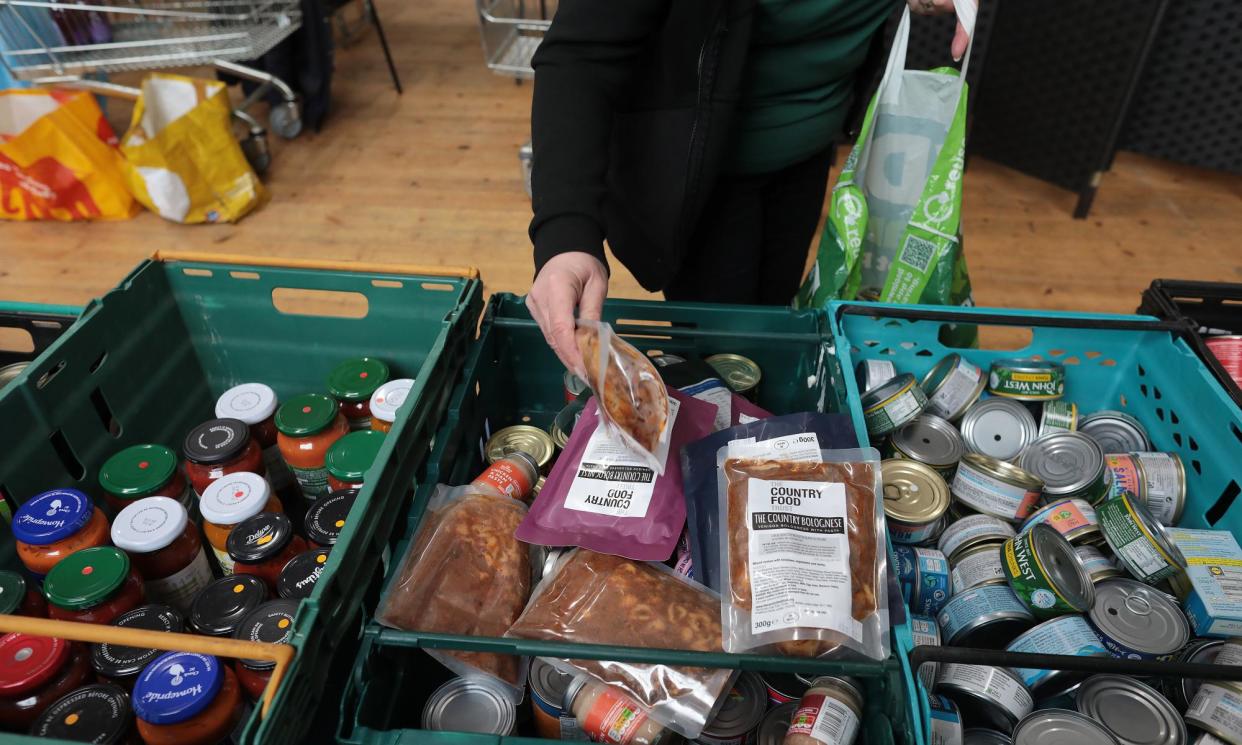How England came to rely on a ‘sticking plaster’ crisis fund

Without the household support fund (HSF), Hereford food bank would be struggling to stay afloat. “We’re seeing fewer cash and food donations, and demand for food parcels is soaring – so its been a saviour for us,” says its manager, Helen Parker.
Last year it received an £84,000 HSF grant from Herefordshire county council. This helped it to give out 2,300 food parcels to nearly 5,000 people (including 1,700 children) over 12 months, equivalent to more than 100,000 meals.
The funding accounted for about a quarter of its total income as a charity, allowing it to respond to rapidly growing demand for its charity food. “Without HSF, we’d have been operating at a loss,” Parker says. “It’s been a godsend.”
Hereford food bank is just one of hundreds of voluntary organisations involved in grassroots welfare crisis schemes in England worrying that the government-funded HSF may be discontinued in just six weeks’ time.
While derided by critics as a “sticking plaster” response to deepening poverty and destitution, the HSF has been a lifeline for networks of grassroots charities working with families in crisis. Last year, local voluntary and community groups in England received about £126m in HSF grants.
The HSF was introduced by the Conservative government in 2021 as a sop to backbench rebels worried that cutting the £20 a week Covid uplift to universal credit would cause poverty to rocket. Worth £842m in England last year, it has become a pop-up annual workaround for a creaking and miserly social security system.
In an era of food banks, warm rooms, starving schoolchildren, holiday hunger, bed poverty and heat-or-eat dilemmas, councils have used it to fund holiday food voucher and activity schemes for children on free school meals, and help households with fuel and other basic costs, either directly or through local charity services.
The HSF has also provided cover for the destruction of England’s local welfare safety net over the past decade after the coalition government abolished the discretionary social fund in 2013. This had offered families in acute crisis cash loans and emergency grants for cookers, beds and fridges.
Had the 2010-11 English social fund budget continued to rise in line with inflation, it would have been £409m last year, according to the charity End Furniture Poverty. Instead, spending was just £79m, the result of crisis support being devolved to councils, whose own financial problems have led them relentlessly to cut provision.
About a third of English local authorities, covering 18 million people, have already abolished local welfare schemes. Many more are now dependent on HSF for over 50% of their local welfare spending. If the HSF is withdrawn, there will “large parts of England with no form of crisis support”, End Furniture Poverty says.
The coalition’s cut-price model of local welfare was widely criticised, in particular its obsession with in kind help rather than cash support – one council crisis scheme notoriously offered a homeless pensioner a tent rather than emergency accommodation. However, it was, many accept, better than nothing in the austerity years.
Campaigners want an urgent overhaul of local welfare in England, replacing the current postcode lottery of schemes with a statutory local authority service funded to reflect rising demand for crisis help for families in direst need. They say the HSF should stay for at least six more months to enable this fundamental redesign.
The HSF is due to run out on 30 September, giving the Labour government very little time to decide whether it will relax its famously rigid budgetary discipline and keep it going. If it does not, campaigners say it risks a school holiday hunger crisis and another winter of misery for England’s poorest families.


